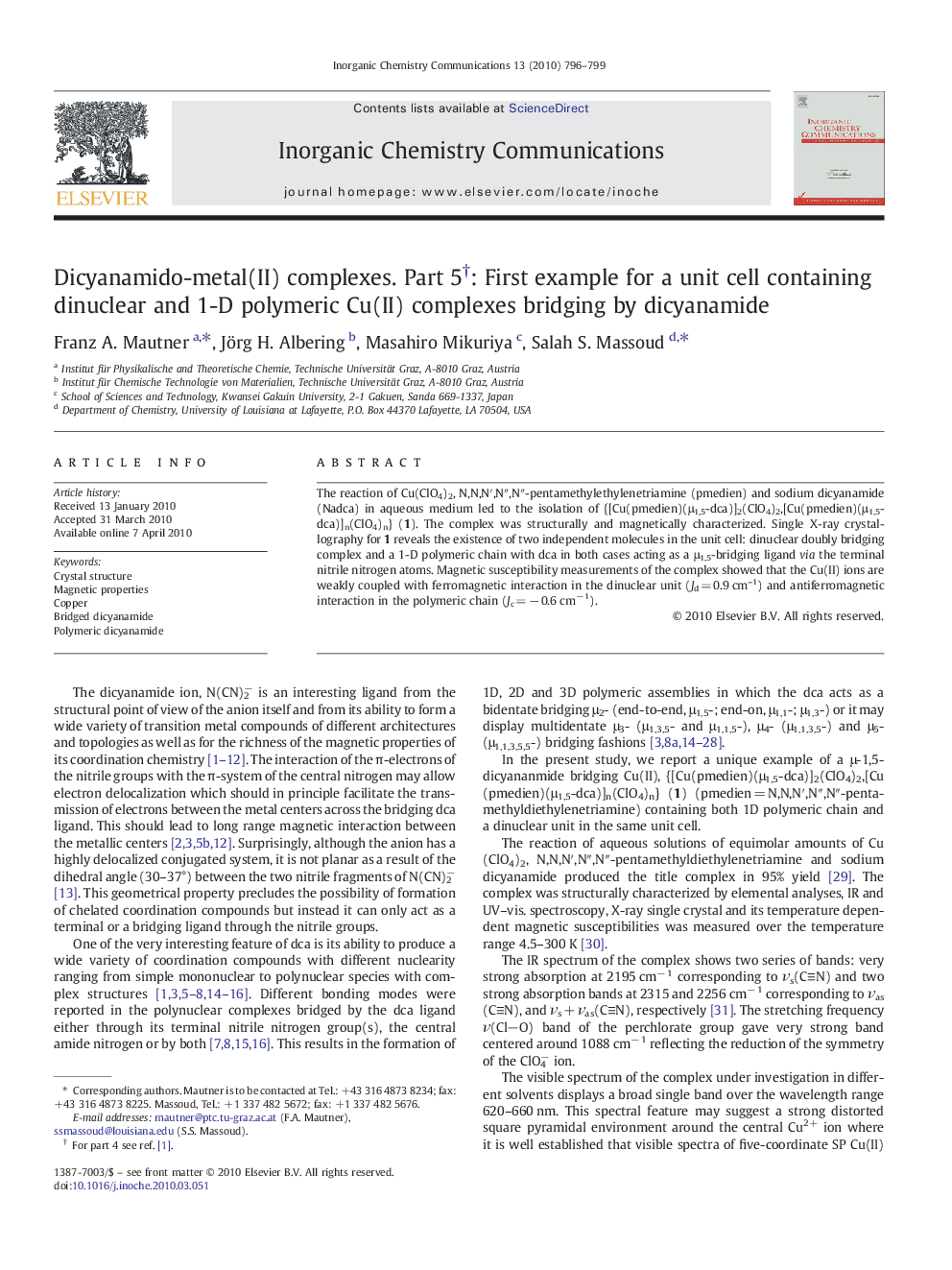| Article ID | Journal | Published Year | Pages | File Type |
|---|---|---|---|---|
| 1304360 | Inorganic Chemistry Communications | 2010 | 4 Pages |
The reaction of Cu(ClO4)2, N,N,N′,N″,N″-pentamethylethylenetriamine (pmedien) and sodium dicyanamide (Nadca) in aqueous medium led to the isolation of {[Cu(pmedien)(μ1,5-dca)]2(ClO4)2,[Cu(pmedien)(μ1,5-dca)]n(ClO4)n} (1). The complex was structurally and magnetically characterized. Single X-ray crystallography for 1 reveals the existence of two independent molecules in the unit cell: dinuclear doubly bridging complex and a 1-D polymeric chain with dca in both cases acting as a μ1,5-bridging ligand via the terminal nitrile nitrogen atoms. Magnetic susceptibility measurements of the complex showed that the Cu(II) ions are weakly coupled with ferromagnetic interaction in the dinuclear unit (Jd = 0.9 cm–1) and antiferromagnetic interaction in the polymeric chain (Jc = − 0.6 cm− 1).
Graphical abstractThe complex {[Cu(pmedien)(μ1,5-dca)]2(ClO4)2,[Cu(pmedien)(μ1,5-dca)]n(ClO4)n} (1) was structurally and magnetically characterized. The unit cell contains two independent weakly coupled molecules: the ferromagnetic dinuclear doubly bridging complex and the aniferromagnetic 1-D polymeric chain with dca acting as a μ1,5-bridging ligand via the terminal nitrile nitrogen atoms.Figure optionsDownload full-size imageDownload as PowerPoint slide
